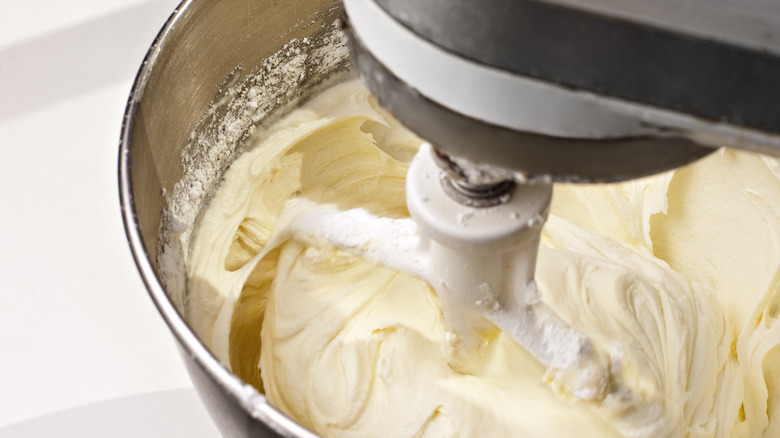The Reason You Always Need To Cream Butter And Sugar When Baking A Cake
Making cakes is one of those things that seems easy but can be challenging without some basic know-how. One of the most important things to remember is that creaming butter and sugar together when you're baking can make or break the taste of your cake. And timing matters when you're baking.
The initial butter and sugar creaming process adds volume and fluffiness to most cakes. However, the jury is still out on whether or not cakes benefit from the reverse creaming method. And there's quite a lot of debate about how long you should mix the butter and sugar before adding other ingredients.
The best way to learn how to bake cakes is to make as many as possible — nobody ever says no to a free practice cake — and try every method of mixing, baking, and decorating. The more you practice, the closer you'll get to becoming a cake-baking expert.
The reverse creaming method, explained
Reverse creaming, a new method of mixing, has been circulating amongst bakers. This method begins by mixing room-temperature butter directly into the dry ingredients instead of mixing butter and sugar alone as a first step. The idea behind this process is that the gluten won't begin to form until it comes in contact with liquid (eggs, milk, water, etc.), but it will become coated in fat from the butter during the reverse creaming.
The result of the reverse creaming method is a cake that's less apt to dome (combine this with cake strips for a foolproof way to get level cakes) and results in a moist but sturdy cake. It's also nearly impossible to over-beat a cake with this method, making it perfect for beginners.
Reverse creaming is ideal if you stack cakes or drape layers with heavy fondant. If you decide to beat your butter and sugar together first, ensure you aren't over- or under-beating.
How long to cream butter and sugar together
A good rule of thumb is mixing the butter and sugar for two to three minutes before adding more dry and wet ingredients. Keep in mind that it's possible to over-mix batter when using this method, resulting in a gummy and too-dense cake.
Set a timer when mixing; it's easy to over-mix if you're working on other parts of your cake while the mixer is running. Even the best bakers make the mistake of over-mixing when a bakery is too busy, so never rely on your intuition.
In addition to reverse creaming and creaming butter and sugar first, there are other methods (alternating dry and wet ingredients, for example) of mixing a cake. Some cakes require that you follow the steps exactly, so be sure to read the directions thoroughly before baking. Which method of mixing works best? Try both to see.


